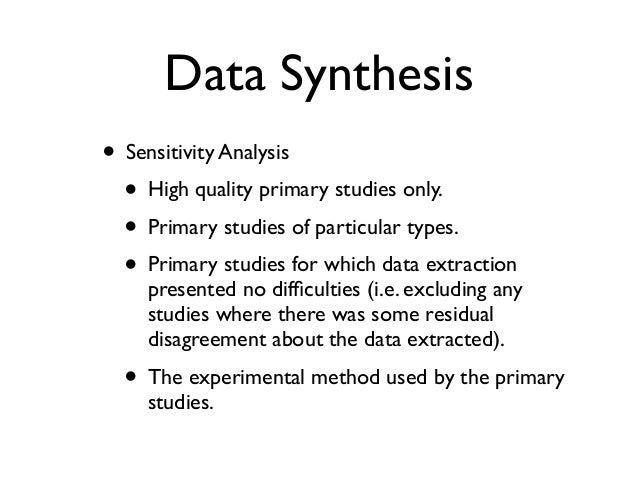Key Points:
- Synthesis is a process of bringing together data from a set of included studies with the aim of drawing conclusions about a body of evidence. This will include synthesis of study characteristics and, potentially, statistical synthesis of study findings.
- A general framework for synthesis can be used to guide the process of planning the comparisons, preparing for synthesis, undertaking the synthesis, and interpreting and describing the results.
- Tabulation of study characteristics aids the examination and comparison of PICO elements across studies, facilitates synthesis of these characteristics and grouping of studies for statistical synthesis.
- Tabulation of extracted data from studies allows assessment of the number of studies contributing to a particular meta-analysis, and helps determine what other statistical synthesis methods might be used if meta-analysis is not possible.
Chapter 10: Analysing data and undertaking meta-analysis
Editors: Higgins JPT, Thomas J, Chandler J, Cumpston M, Li T, Page MJ, Welch VA
Key Points:
- Meta-analysis is the statistical combination of results from two or more separate studies.
- Potential advantages of meta-analyses include an improvement in precision, the ability to answer questions not posed by individual studies, and the opportunity to settle controversies arising from conflicting claims. However, they also have the potential to mislead seriously, particularly if specific study designs, within-study biases, variation across studies, and reporting biases are not carefully considered.
- It is important to be familiar with the type of data (e.g. dichotomous, continuous) that result from measurement of an outcome in an individual study, and to choose suitable effect measures for comparing intervention groups.
- Most meta-analysis methods are variations on a weighted average of the effect estimates from the different studies.
- Studies with no events contribute no information about the risk ratio or odds ratio. For rare events, the Peto method has been observed to be less biased and more powerful than other methods.
- Variation across studies (heterogeneity) must be considered, although most Cochrane Reviews do not have enough studies to allow for the reliable investigation of its causes. Random-effects meta-analyses allow for heterogeneity by assuming that underlying effects follow a normal distribution, but they must be interpreted carefully. Prediction intervals from random-effects meta-analyses are a useful device for presenting the extent of between-study variation.
- Many judgements are required in the process of preparing a meta-analysis. Sensitivity analyses should be used to examine whether overall findings are robust to potentially influential decisions.
Chapter 11: Undertaking network meta-analyses
Editors: Higgins JPT, Thomas J, Chandler J, Cumpston M, Li T, Page MJ, Welch VA
Key Points:
- Network meta-analysis is a technique for comparing three or more interventions simultaneously in a single analysis by combining both direct and indirect evidence across a network of studies.
- Network meta-analysis produces estimates of the relative effects between any pair of interventions in the network, and usually yields more precise estimates than a single direct or indirect estimate. It also allows estimation of the ranking and hierarchy of interventions.
- A valid network meta-analysis relies on the assumption that the different sets of studies included in the analysis are similar, on average, in all important factors that may affect the relative effects.
- Incoherence (also called inconsistency) occurs when different sources of information (e.g. direct and indirect) about a particular intervention comparison disagree.
- Grading confidence in evidence from a network meta-analysis begins by evaluating confidence in each direct comparison. Domain-specific assessments are combined to determine the overall confidence in the evidence.


